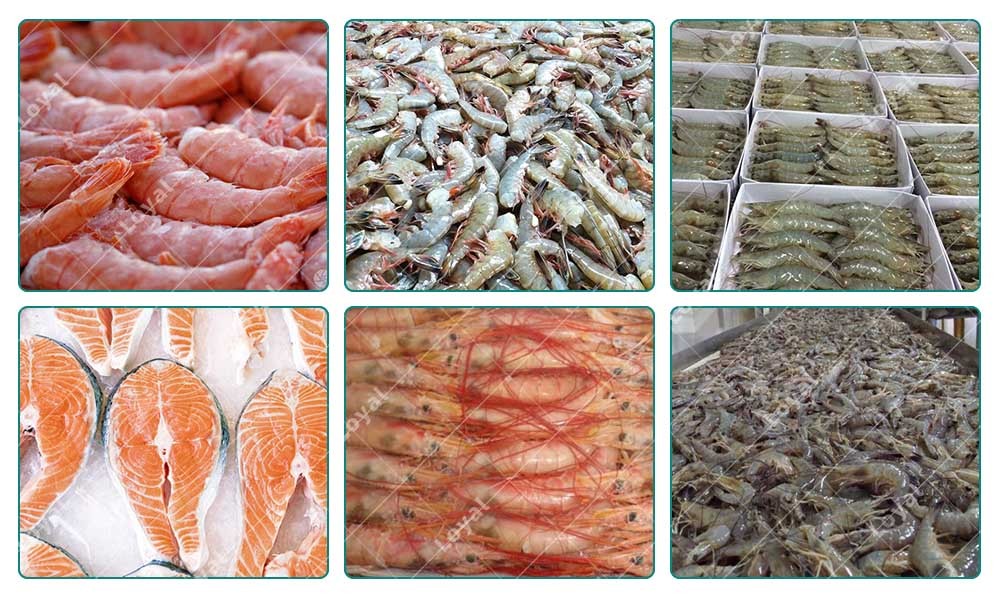Seafood Defrosting Microwave Oven
Description Of Seafood Defrosting Oven
A seafood thawing oven is a kitchen appliance designed to quickly and safely thaw frozen seafood. It works by using a combination of low heat and circulating air to gradually heat frozen seafood to the ideal temperature. The interior of the oven is usually made of nonstick material and may have removable racks or baskets for holding seafood while it is defrosting. The main benefits of using a seafood thawing oven are speed and convenience. Unlike traditional methods like leaving seafood at room temperature or thawing it in the microwave, an oven thaws frozen seafood more evenly and quickly without overcooking or drying it out. Some models of seafood thawing ovens have additional features, such as settings for different types of seafood, timers, and temperature controls. Be sure to follow the manufacturer's instructions for proper oven use, or you could risk improperly thawing seafood and even foodborne illness. Overall, the Seafood Thaw Oven is a valuable tool for home cooks and professional chefs who want to quickly and safely thaw frozen seafood while maintaining its quality and texture

How To Defrost The Seafood
1.Remove frozen seafood from the freezer to a container or plate suitable for use in the thawing oven. Make sure seafood is not in its original packaging.
2.Place the container or plate in the defrost oven. Make sure the oven is set to the right temperature for thawing seafood, usually around 38°F to 40°F (3°C to 4°C).
3.Set the timer on the defrost oven to the recommended time for the weight of seafood. In general, you should have about 10 to 12 minutes of defrosting time per pound of seafood.
4.Wait for the defrost oven to start working. Check seafood regularly to ensure even thawing. Spin the dish or container, if necessary, to speed up the process.
5.Once the seafood is completely thawed, remove it from the oven and transfer it to the refrigerator to prevent bacterial growth. You can then cook your seafood any way you like.
NOTE: Make sure to follow the manufacturer's instructions for defrosting your specific oven. It's also important to always take proper food safety precautions when thawing and cooking seafood.

Working Principle Of Industrial Microwave Seafood Defrosting Oven
The working principle of industrial microwave seafood thawing furnace is to use microwave radiation to heat frozen seafood, so that the water molecules inside the seafood vibrate to generate heat. This heat then causes the ice crystals inside the seafood to melt, effectively thawing the seafood. An oven consists of a magnetron that generates microwave radiation and a waveguide that directs the microwave energy into the cavity of the oven. Frozen seafood is placed on trays or racks within the cavity and microwave energy is directed onto it. The oven is designed to defrost seafood quickly and evenly using precise power and time settings. The power setting determines the intensity of the microwave energy, while the time setting controls the duration of the defrosting process. There are several advantages to using an industrial microwave seafood thawing oven over traditional thawing methods. It's faster, more efficient, and more consistent, reducing product loss, improving quality, and saving time and effort.
Microwave Seafood Defroster's Advantage
|
Faster Thawing |
The Microwave Seafood Thawer defrosts seafood 10 times faster than traditional methods such as air thawing or water thawing. This reduces production delays and speeds up the availability of seafood products. |
|
Improve Efficiency |
The industrial microwave seafood thawing oven is designed to thaw seafood evenly, thereby reducing product loss caused by over-thawing or under-thawing. This increases efficiency and reduces waste, resulting in cost savings. |
|
Consistent Quality |
Because the microwave energy is evenly irradiated on the seafood, it ensures consistent quality for all products. This is critical to food safety and helps keep customers happy. |
|
Seafood Is Safer |
Unlike traditional thawing methods such as water thawing, microwave seafood thawing does not require contact with water. This results in seafood without any water damage, maintaining its original texture, flavor and nutritional value. |
|
Save Time And Effort |
Microwave thawing consumes less energy than traditional methods. This saves time, effort and costs. |

Seafood Product Display
Seafood is a popular food category that includes various aquatic animals consumed by humans for nutritional and culinary benefits. Some of the most common types of seafood include fish (such as salmon, tuna, and cod), shellfish (such as shrimp, crab, and lobster), and molluscs (such as oysters, clams, and mussels).
Seafood is often revered for its high levels of protein, healthy fats like omega-3s, and essential vitamins and minerals like vitamin D and iodine. It is also known for its unique flavor and texture, which can vary greatly depending on the type of seafood and how it is prepared.
In many cultures, seafood plays an important role in traditional cuisine and is used in dishes such as sushi, fish and chips, paella, cioppino, bouillabaisse and clam chowder. It can be prepared in many different ways, including grilling, steaming, frying and baking.
Overall, seafood is a popular healthy food enjoyed by millions of people around the world. However, it is important to ensure that seafood is obtained from sustainable and responsible sources and that it is cooked and handled properly to prevent contamination and disease.
